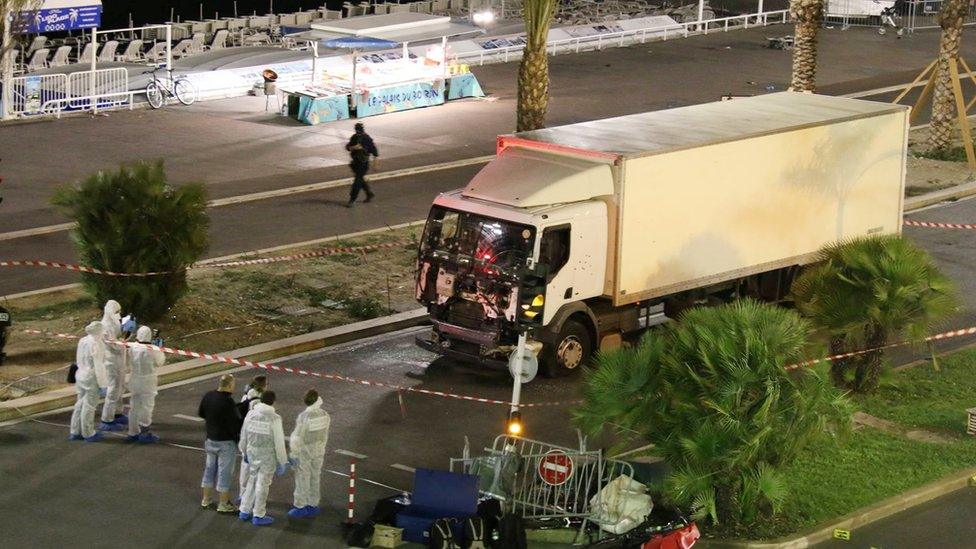US terror blasts: How US forensic scientists examine bombs
- Published
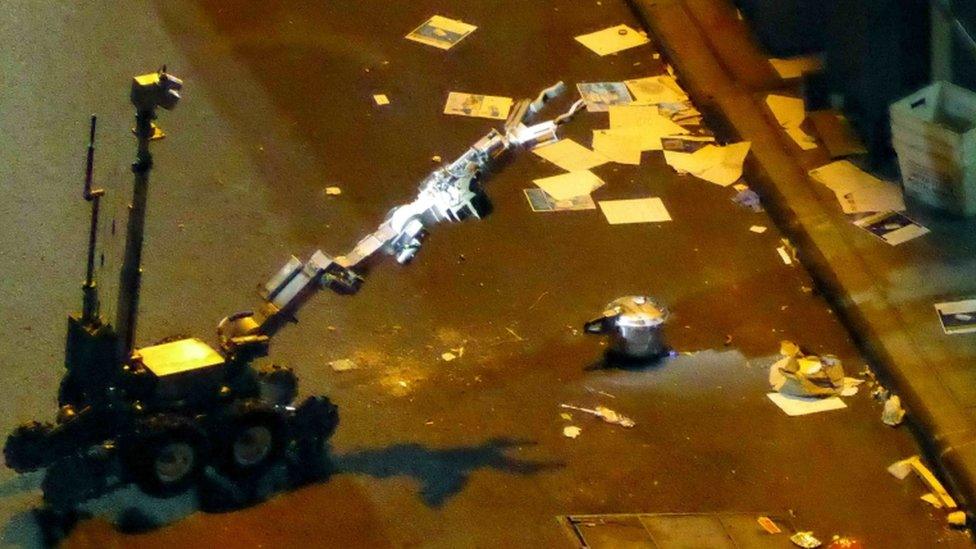
An NYPD robot approaches an unexploded pressure cooker bomb
When Improvised Explosive Devices (IEDs) were found this month in New York and New Jersey, they gave detectives a wealth of information central to the ongoing investigation.
Amongst the protruding wires, the flip-phones, the shrapnel, the undetonated explosives and even the burnt traces from the devices that did explode were clues that help build up a picture of how the bombs were put together and where the material came from.
So who undertakes this painstaking work and how do they go about it?
Inside the secret world of explosives forensics
Overall responsibility lies with the FBI, which has its own extensive forensic science division, including state-of-the-art laboratories.
Footage from WABC shows the suspect being loaded into an ambulance
The FBI has lab-skilled forensic scientists and investigators, trained at its headquarters in Quantico, Virginia, stationed in all of its 56 field offices around the US.
When an incident occurs the FBI will often deploy scientists from its Evidence Response Team (ERT) to identify and retrieve evidence from the scene in such a clinical way that it can stand up in a court of law.
They will also 'clean up' the scene, helping to make it safe.
In the case of the New York and New Jersey devices, agents were available in both New York City and Newark, New Jersey.
Ever since the 9/11 attacks of 2001 the New York Police Department has been developing considerable counter-terrorism capabilities independent of federal agencies, so it deployed its own First Responders to the scene.
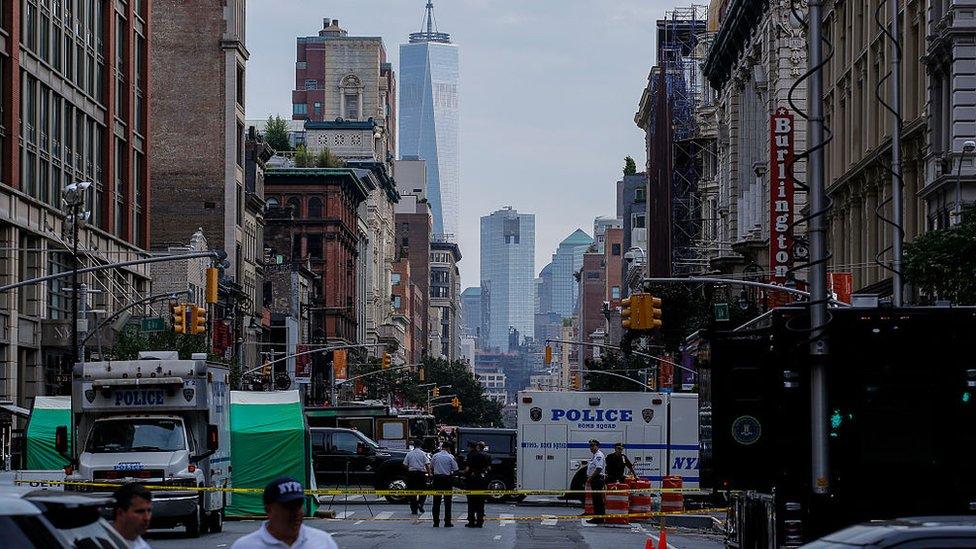
Thirty-one people were hurt when a bomb exploded in NYC's Chelsea neighbourhood
Once evidence arrives at the FBI Laboratories in Quantico there are a whole range of tests it undergoes, each involving different areas of expertise.
There is fingerprint analysis, DNA, hair comparisons and photo-imaging. These in turn pull in investigators from divisions like the Latent Print Unit (LPU), the Photographic Operational Projects Unit (OPU) and the Federal DNA Database Unit (FDDU).
Sometimes there is no DNA evidence available, but when there is then investigators run the retrieved sample through the DNA database, searching for a match with known individuals, known in the jargon as 'looking for hits'.
A bomb disposal robot tried to disarm a device under a bridge near the station
When terrorism is suspected, as it is in this case - despite the earlier, mistaken pronouncements by certain US officials - specialised skills are required.
On Monday the FBI confirmed that a division called TEDAC - The Terrorist Explosive Device Analytical Center - is helping with the investigation.
Set up in 2003 as a kind of 'one-stop shop' to inspect all suspected terrorist explosive devices, TEDAC is based at Redstone Arsenal in Huntsville, Alabama.
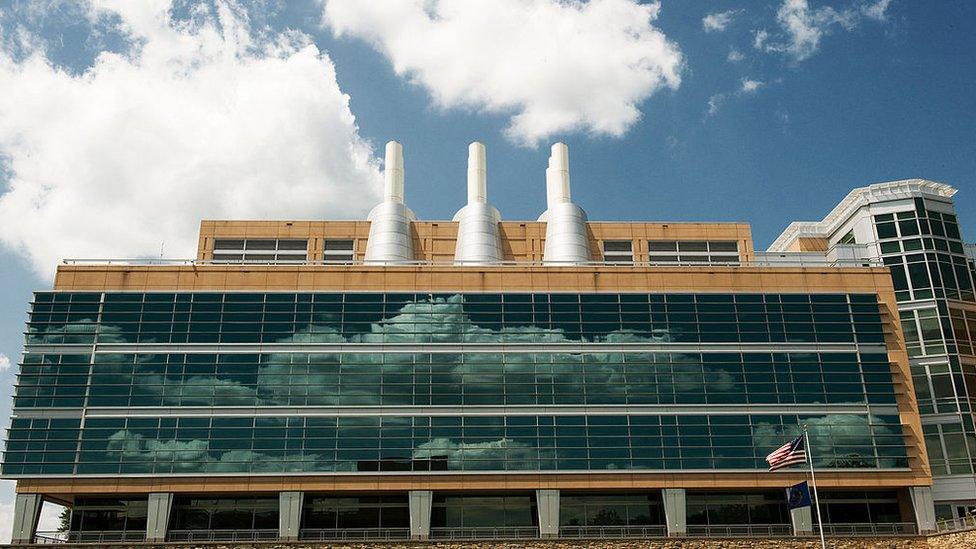
The FBI crime laboratory in Quantico, Virginia where bombs are taken for testing
It is the US equivalent of Britain's Fort Halstead in Kent, where all suspicious devices are sent for analysis and the findings are shared with government, law enforcement or the judiciary.
Not surprisingly, the majority of items examined by TEDAC in recent years have come from Iraq and Afghanistan. As a component of the FBI Laboratories, TEDAC has offices and staff at FBI HQ in Quantico.
What the forensic scientists of TEDAC do is essentially try to understand everything that went into the making of that bomb.
Think of it as reverse engineering. They are looking for forensic clues that will lead to identifying the bomb-maker.
Science is, of course, only one part of an FBI investigation.
In the case of terrorism the FBI will also deploy a 'Counter-Terrorism Fly Team' of special agents and intelligence analysts from its HQ in Virginia to wherever in the world an incident has occurred.
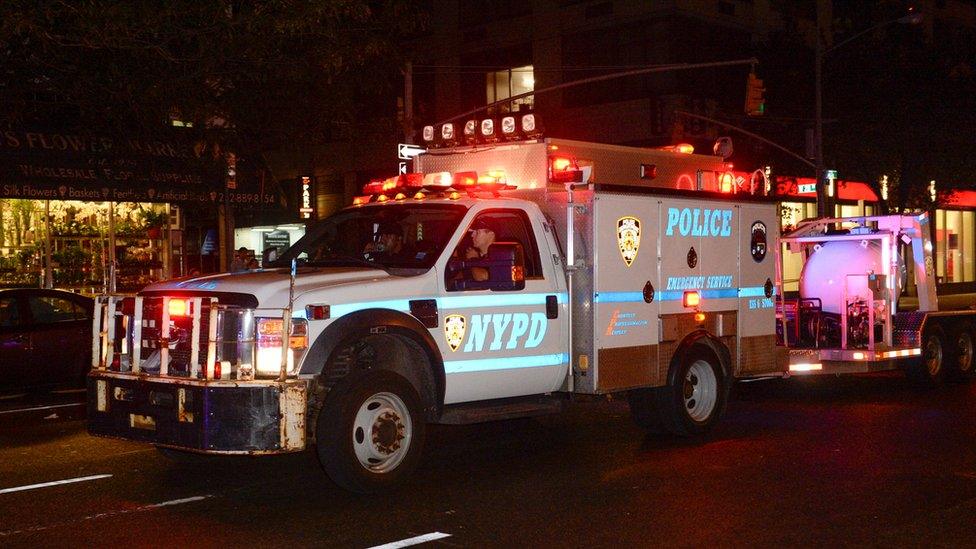
The unexploded bomb in New York was transported away from the scene in a specially-equipped spherical chamber
The Fly Team, set up in 2002 in the wake of the 9/11 attacks, will include linguists and specialists in anything from biometrics to digital media exploitation to tactical evasive driving.
In recent years they have been deployed to incidents in Benghazi, Nairobi and Boston.
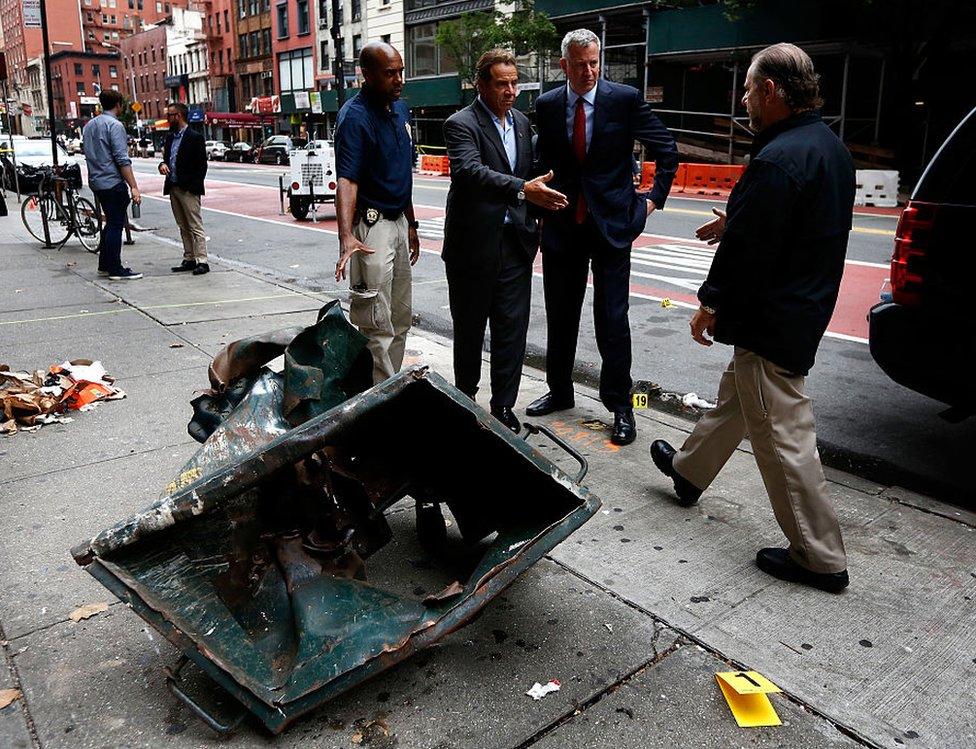
NYC elected officials inspect the dumpster where a bomb is believed to have detonated
- Published11 August 2016
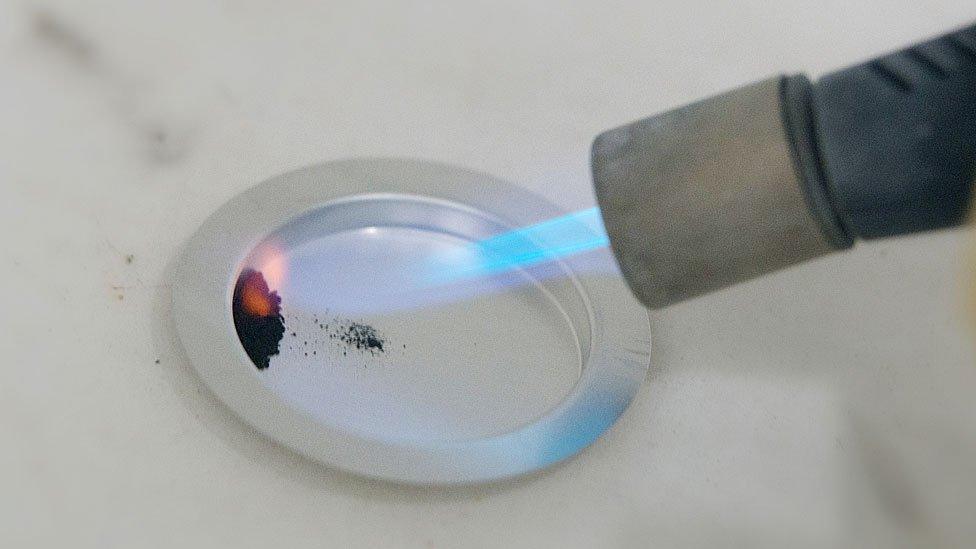
- Published25 July 2016
